Fred Thieler. Bilder, Zeichnungen, Gouachen
28 April to 9 June 2018 ⟶ Corneliusstraße
Exhibition View
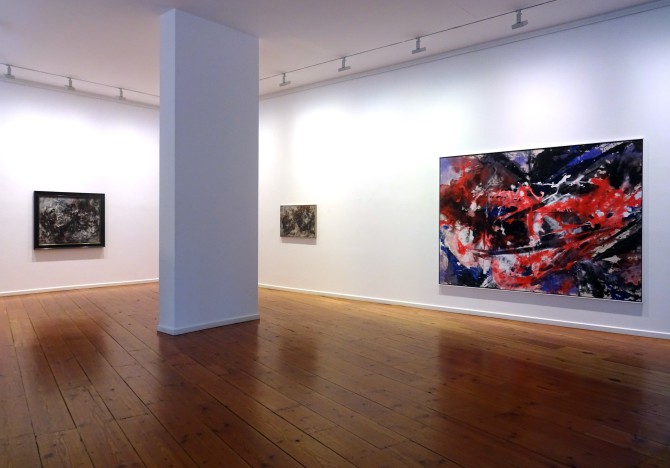
Exhibition View
With Light Green 1995, mixed media/canvas, 210 x 290 cm
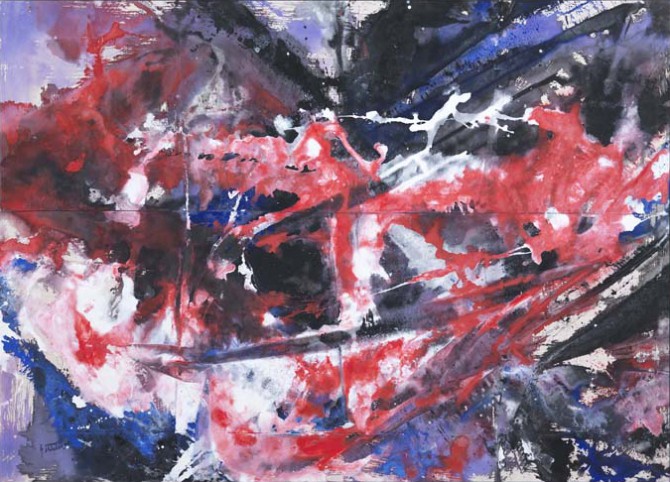
With Light Green 1995, mixed media/canvas, 210 x 290 cm
Exhibition View
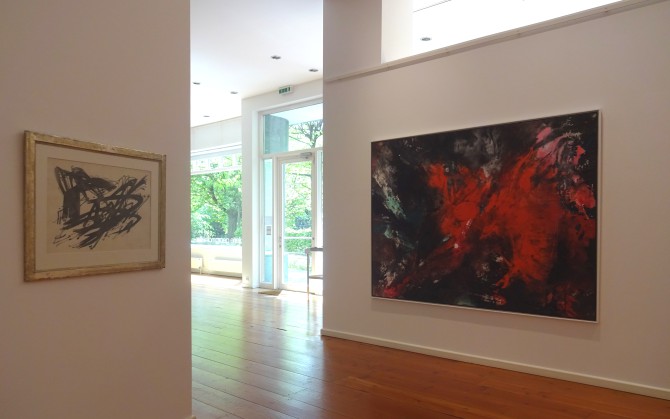
Exhibition View
Red Dominance 1988, mixed media/canvas, 180 x 240 cm (SOLD)
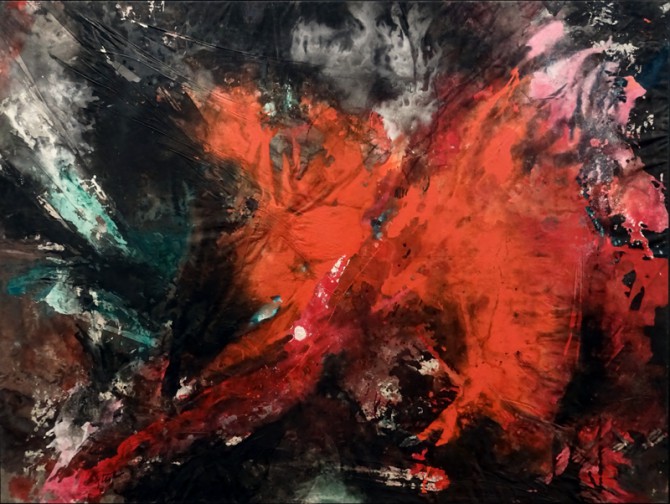
Red Dominance 1988, mixed media/canvas, 180 x 240 cm (SOLD)
Exhibition View
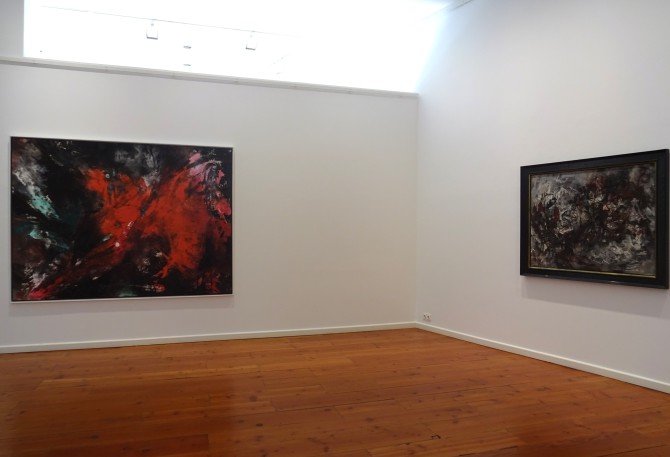
Exhibition View
Exhibition View
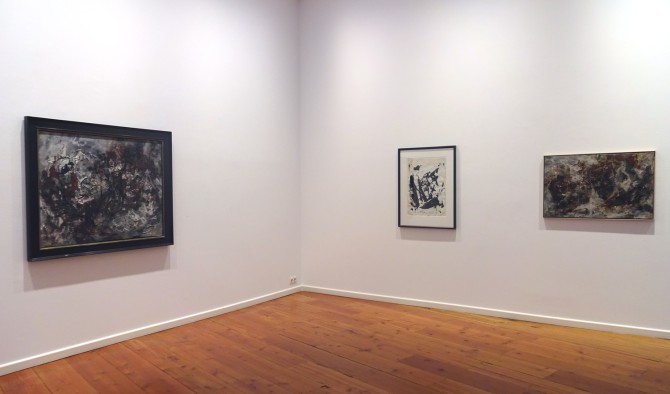
Exhibition View
Untitled, 1969, mixed media/paper, 70 x 50 cm
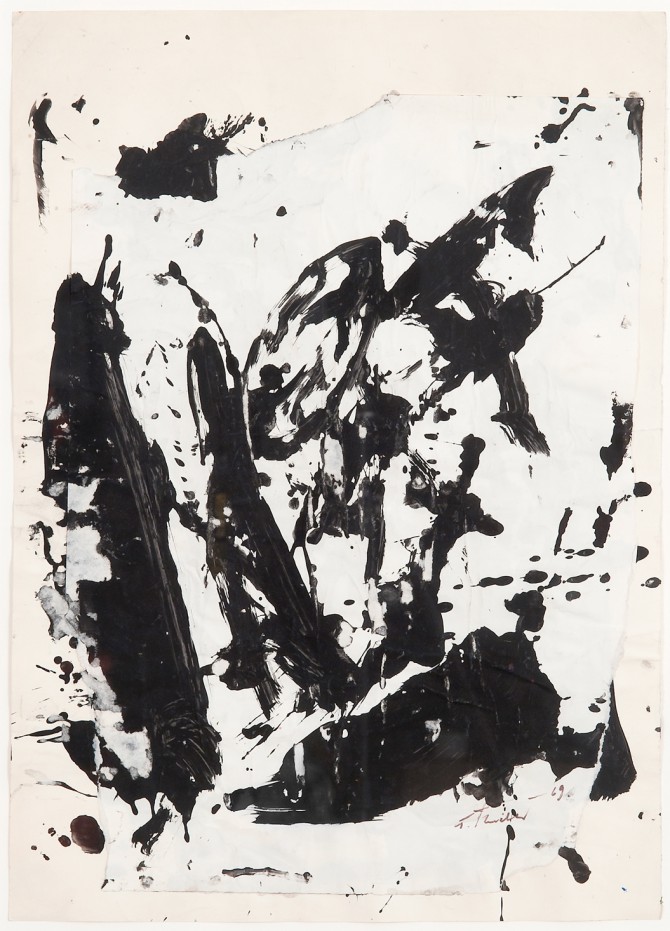
Untitled, 1969, mixed media/paper, 70 x 50 cm
Untitled, 1961, oil/canvas, 86 x 123 cm (SOLD)
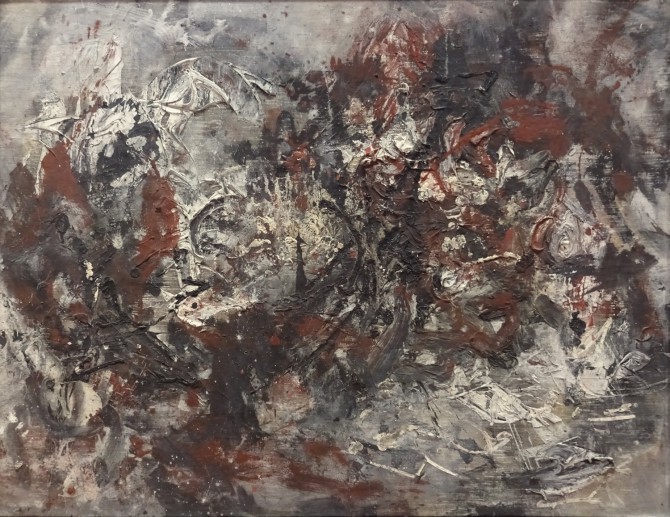
Untitled, 1961, oil/canvas, 86 x 123 cm (SOLD)
Partial view of the exhibition
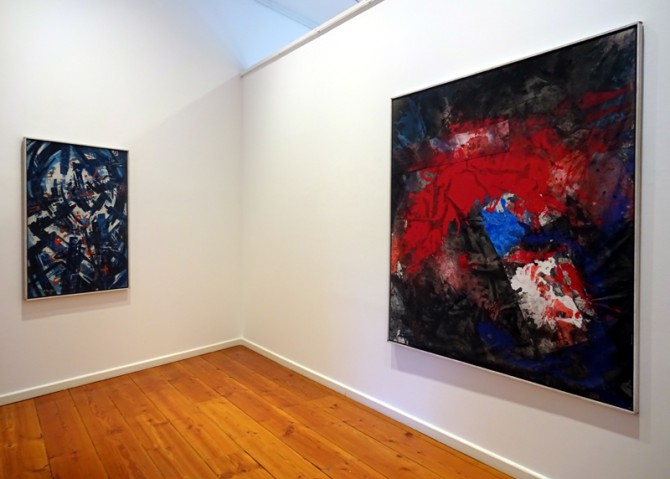
Partial view of the exhibition
Versprengtes Blau (Dispersed Blue), 1992, synthetic resin dispersion/collage/canvas, 180 x 170 cm (SOLD)
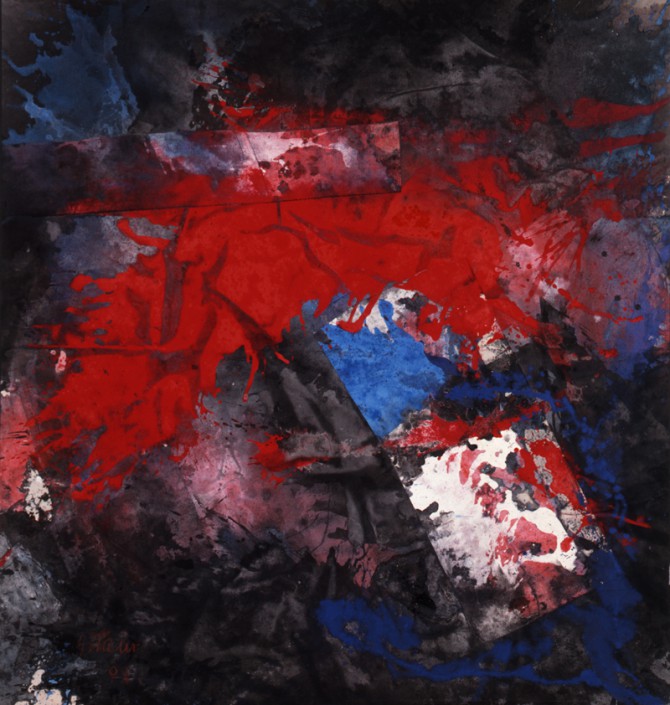
Versprengtes Blau (Dispersed Blue), 1992, synthetic resin dispersion/collage/canvas, 180 x 170 cm (SOLD)
Konstruktionsrhythmus (Construction Rhythm), 1953, oil/canvas, 130 x 88 cm (SOLD)
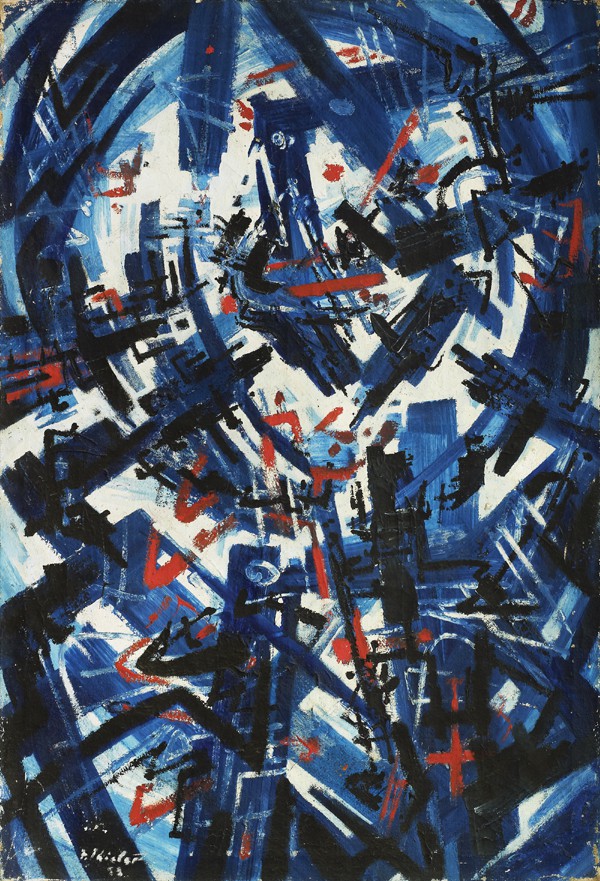
Konstruktionsrhythmus (Construction Rhythm), 1953, oil/canvas, 130 x 88 cm (SOLD)
Untitled, 1952, chalk/paper, 62 x 48 cm
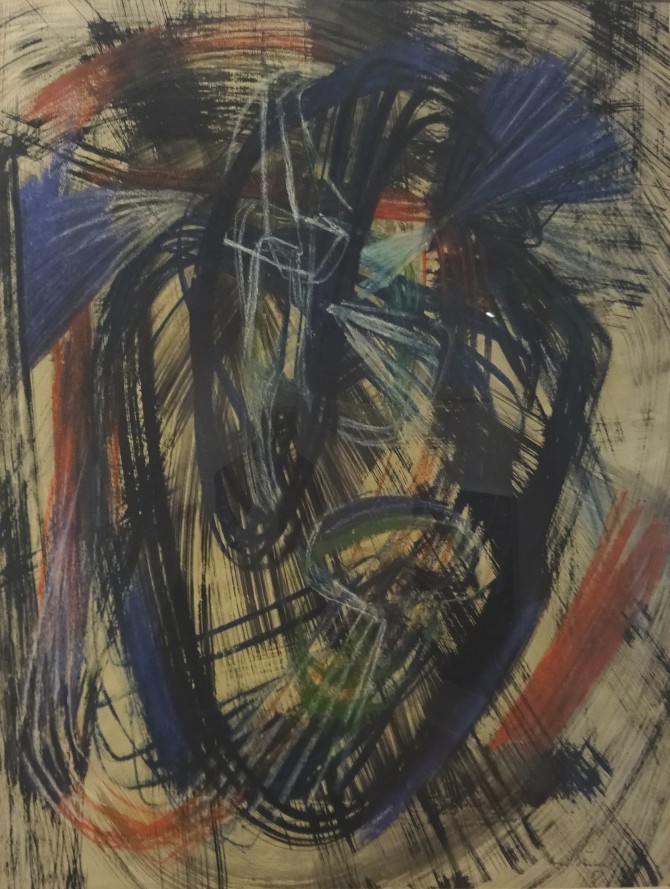
Untitled, 1952, chalk/paper, 62 x 48 cm
Exhibition View
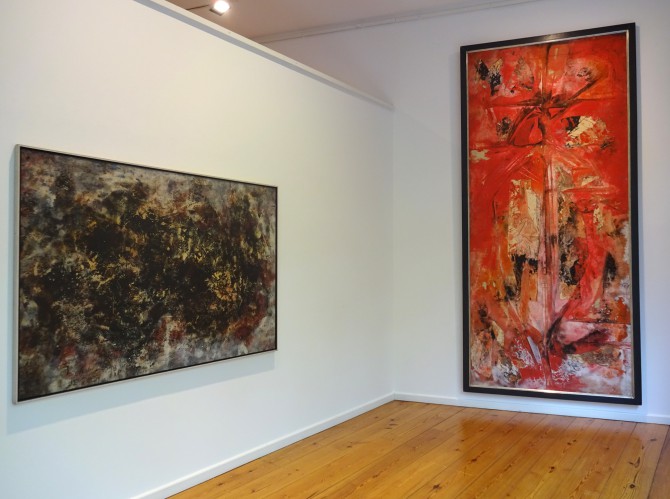
Exhibition View
For M, 1961, mixed media/canvas, 132 x 190 cm
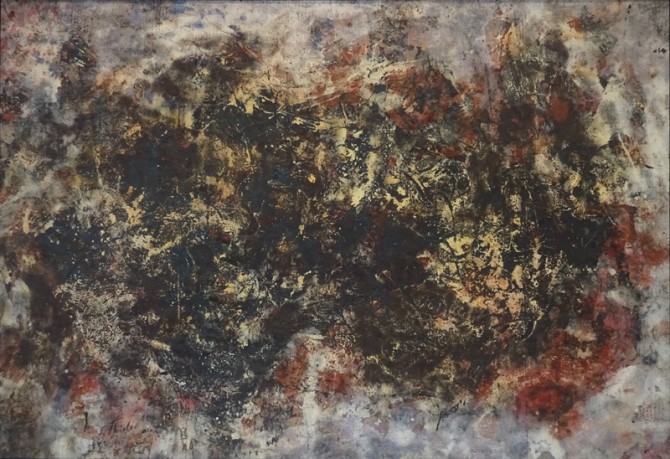
For M, 1961, mixed media/canvas, 132 x 190 cm
To whom it may concern, 1965-67, mixed media/collage/canvas, 353 x 150 cm
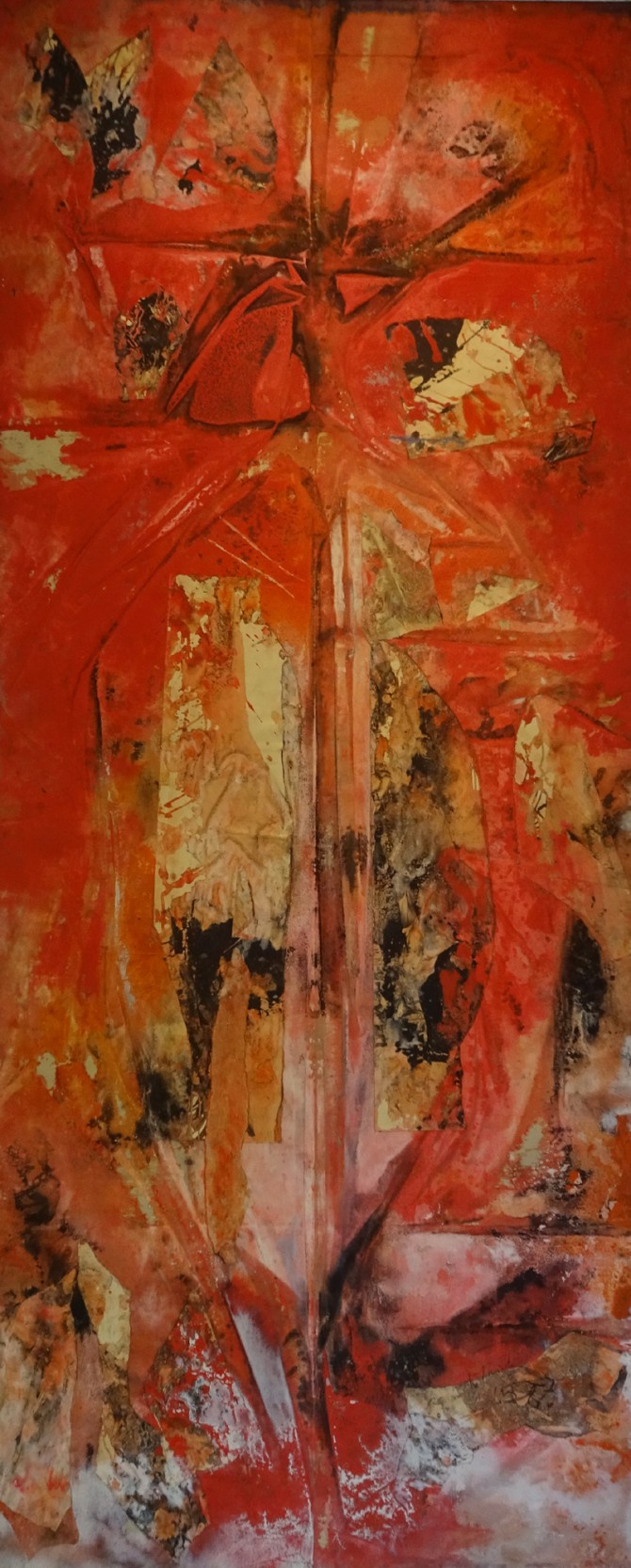
To whom it may concern, 1965-67, mixed media/collage/canvas, 353 x 150 cm
Partial view of the exhibition
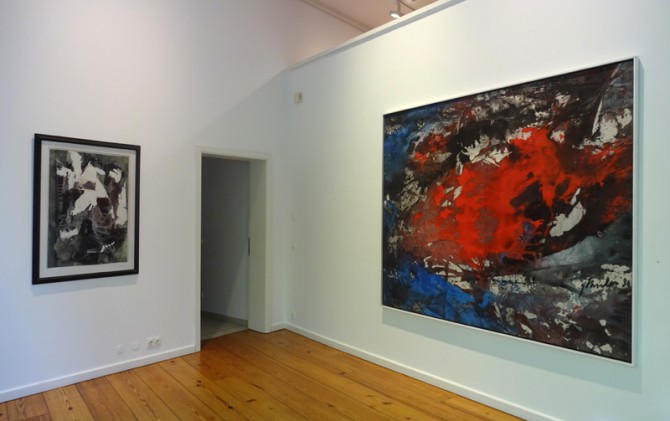
Partial view of the exhibition
Mit rotem Zentrum (With red centre), 1986, mixed media/canvas, 180 x 220 cm
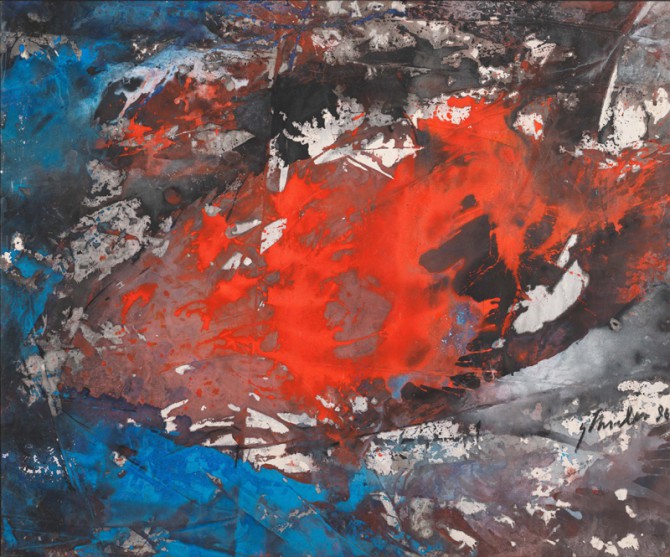
Mit rotem Zentrum (With red centre), 1986, mixed media/canvas, 180 x 220 cm
Fred Thieler is generally described as an Informel painter, but if you follow his further development, you have to realise that he changed his working method quite frequently. From about 1954 onwards, Thieler experimented with the palette knife and with colours that required him to work very quickly, as later corrections were difficult. Andrea Firmenich of the Kunsthalle Emden describes this aptly: "A splintery-crystalline smallness like glass shattered a thousand times spreads out on the painting surface." This way of working can also be called tachisme, a work on small spots, which is what the word, French in itself, means. Only over the years does he become more supple, more in the direction of Informel, clearly recognisable in works from 1959, his Berlin period. Then, in 1962, a fundamental change takes place. He painted a picture measuring almost 2 by 4 metres with the programmatic title "Mutabor", which means "I am being changed". The small-scale application of paint is replaced by large coherent areas of colour. This painting, an incunabulum for Fred Thieler's further work, is the great pride of the Berlinische Galerie, which owns more than 20 of his works. At the same time, the painter changed his colour palette; from now on, he mainly used the colour blue, so that in the course of the years one proverbially spoke of "Thieler blue", alongside red and, more rarely, black and white as accents, at most sparingly yellow. With the end of the sixties, Fred Thieler achieved a mastery through a method that forces us to detach him from the title of Informel painter alone. For from then on he is actually a master of "action painting". Comparable to Jackson Pollock, the American, and Kazuo Shiraga, the Japanese, Thieler works in full action on canvases spread out on the floor, with which - as he says - he conducts a "dialogue", a dialogue. He pours on a heavily diluted paint, lets it "answer", answers in turn by pouring again, and so on. "To me, the painting actually dictates the process of painting" he says. Action and reaction occupy him night after night. For he keeps to fixed times, every night from 9 pm in the evening until 2 am in the morning he works alone and shielded in an abandoned asylum church. In the 80s and 90s, the painter reached his greatest mastery, now the colour flows in unbroken flow, in bright red, in powerful blue, heightened by white or demonised by black. Tachisme, Informel, Action Painting, Thieler himself called these terms useful for critics or collectors, but he himself said that he did not work according to such schemes, that he always tried to express his inner self, his "self". He liked to claim the designation "individual" for himself, as did Munch. Fred Thieler was a great individual in Germany in the years after the war, who succeeded in being present in all museums, who artistically decorated churches and public buildings and who, at an advanced age, created a grandiose ceiling painting in the Residenztheater in Munich. (Text: Hartmut Ackermeier)